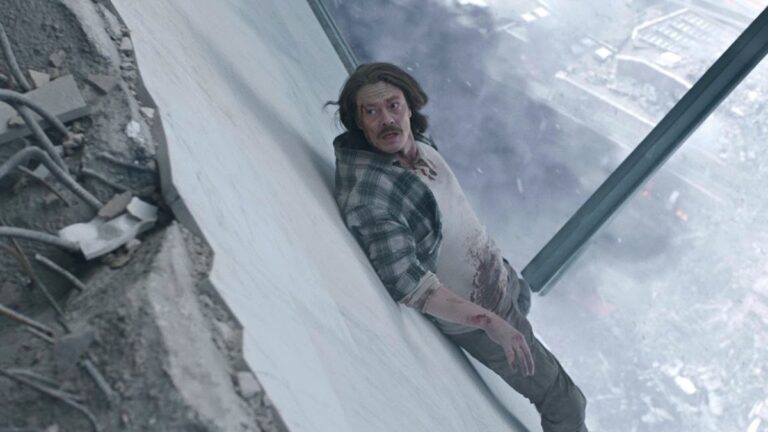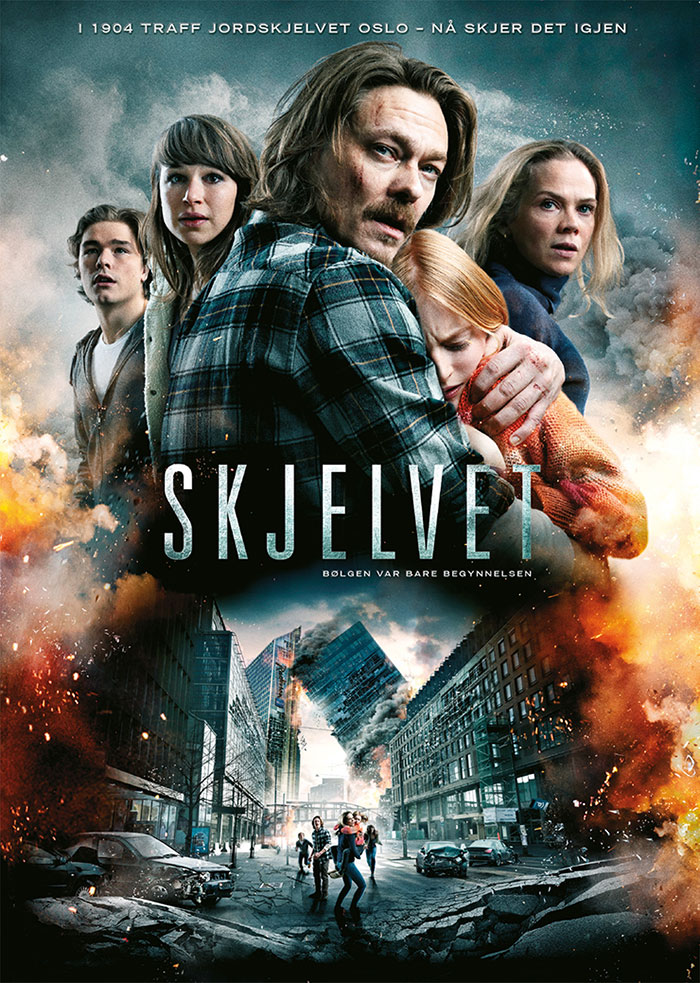What happens when Nordic noir meets Hollywood-style disaster? Norway’s second-ever blockbuster calamity film shakes things up with emotional depth, local landmarks, and surprisingly real scientific roots.
Disaster movies are usually the realm of Hollywood. Think San Andreas, The Day After Tomorrow, or 2012 — high-octane spectacles full of collapsing skyscrapers, chaotic CGI, and superhuman feats of survival.

Scandinavia, by contrast, is better known for brooding crime dramas and slow-burn character studies. But what happens when a Norwegian film studio decides to bring an earthquake to Oslo?
Following the surprise international success of The Wave (Bølgen) in 2015, the Norwegian disaster genre continued in 2018 with The Quake (Skjelvet), a bigger-budget, more ambitious sequel that imagined what would happen if a powerful earthquake struck the Norwegian capital.
Several years on, the film still holds up surprisingly well. Let’s take a fresh look at The Quake, from its plot and cast to the real-life science behind it and how it was received both at home and abroad.
From Geiranger to Oslo
The Quake picks up three years after the events of The Wave, in which geologist Kristian Eikjord (played by Kristoffer Joner) heroically saved his family and others from a catastrophic tsunami in the fjord town of Geiranger.
Scarred by trauma and now separated from his wife Idun (Ane Dahl Torp), Kristian is living a solitary life in western Norway when he learns that a former colleague has died under mysterious circumstances in an Oslofjord tunnel.
Despite his fragile mental state, Kristian travels to Oslo to investigate. What he uncovers is chilling: signs of increasing seismic activity beneath the city.
As he races to convince others that a major quake is imminent, the tension builds and, as the title suggests, the ground eventually gives way in spectacular fashion.
A Bigger Budget, a Bigger Disaster
While The Wave worked within the limitations of a tight budget by focusing on a localised threat and intimate family drama, The Quake takes a more expansive approach.

With a reported budget of around NOK 60 million (roughly double its predecessor), the film boasts a noticeable step up in visual effects, cinematography, and scale.
Seeing iconic Oslo landmarks such as the Barcode district and Oslo Central Station reduced to rubble makes for an arresting change from the usual Hollywood fare. There’s a particular thrill in watching familiar locations reimagined through the lens of catastrophe.
But for all the chaos, The Quake remains a character-driven film. The focus never strays far from the Eikjord family, and the emotional stakes feel grounded in real human relationships. This time, it’s the youngest daughter Julia who takes centre stage in the family dynamic.
Strong Performances Anchor the Action
Kristoffer Joner delivers another intense performance as Kristian, portraying a man haunted by guilt, doubt, and a deep sense of responsibility. His descent into near-obsession is played with subtlety, and his physical deterioration mirrors his emotional unraveling.
But it’s Ane Dahl Torp as Idun who once again steals the show. In both films, her character’s instincts and resilience shine through, and she remains the moral and emotional heart of the story.
One climactic scene in particular (which we won’t spoil here) echoes the shocking moment from The Wave when Idun had to make a life-or-death decision. It is once again her character who delivers the film’s emotional punch.
Supporting performances from Jonas Hoff Oftebro as the now-teenaged Sondre, and newcomer Edith Haagenrud-Sande as Julia, also add to the film’s credibility.
Inspired by Real Science
As with its predecessor, The Quake grounds its premise in real-world geological threats. The film draws inspiration from the 1904 Oslo earthquake, which measured 5.4 on the Richter scale and caused widespread panic.

While mild by global standards, it remains Norway’s strongest recorded quake and revealed the presence of the Oslo Rift, a long-dormant fault line beneath the region.
Geologists agree that while large quakes are rare in Norway, the potential for seismic activity in and around Oslo is not zero. The film’s blend of scientific plausibility and dramatic license gives it an unsettling edge, especially for Norwegian viewers who know just how stable their country usually seems.
Critical Reception and International Reach
Upon its release in 2018, The Quake received mostly positive reviews. Critics praised its pacing, effects, and emotional weight.
The Norwegian newspaper VG called it “a well-executed and nerve-wracking film,” while NRK highlighted how it managed to balance spectacle with realism.
Internationally, the film also made an impression. The Hollywood Reporter said the movie managed to balance tense family drama with blockbuster destruction: “The Quake make not make any fresh waves, but it’s a solid entry in a tired genre.”
Some reviewers even argued that the Norwegian setting gave the disaster genre a fresh feel, precisely because it wasn’t drenched in the usual Hollywood gloss.
Audience reactions were generally favourable, particularly among fans of The Wave who appreciated the continuation of the story. Though not a massive box office hit outside Scandinavia, it performed solidly and found a wider audience through streaming platforms.
Where to Watch The Quake Today
While the film initially premiered in Norwegian cinemas with limited international screenings, The Quake is now widely available for free or to rent on streaming platforms.
Specific platforms vary depending on your location, but include Hulu, Amazon Prime Video, Apple TV, and Google Play. Just search for the movie on your preferred service, often under its English title.
If you enjoyed the first film, or you're simply curious to see how a Norwegian city would cope with a natural disaster, The Quake is well worth your time. Just be warned. If you live in Oslo, it might make you eye the pavement a little differently.


I am sooooo excited to see this. I cannot wait for this to make its way to the US via Netflix.
It was exciting to watch THE WAVE because I stayed in the exact hotel it hit. Such a beautiful peaceful town (without The Wave.”